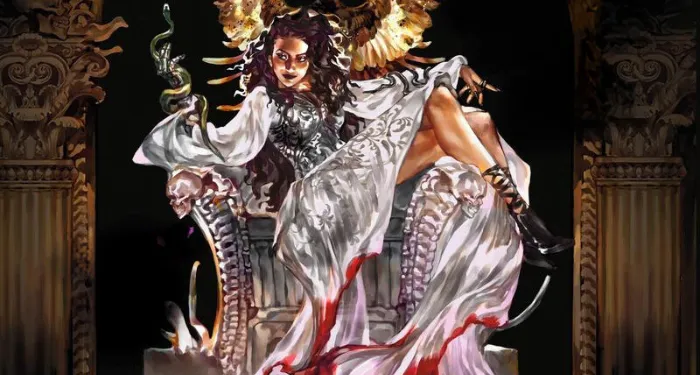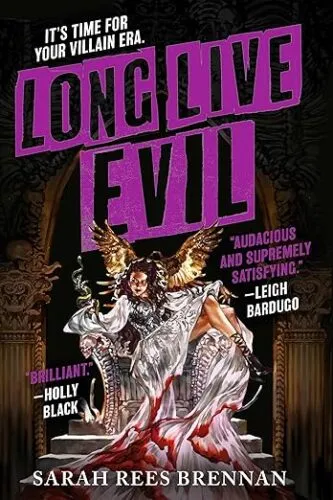
Read This Portal Fantasy Meets Trolly Problem
I never expected a villainess portal fantasy novel to deeply explore survival, terminal illness, empathy, and story seemingly all at once. As a longtime fan of Brennan’s young adult work, I was excited for her adult debut and even more excited to discover it was about Rae, a former cheerleading mean girl who is given a chance to come out of three years of terminal cancer treatments alive by going to another world—specifically, the world of her and her sister’s favorite book series. Just two problems: she is a villainess who is set to die tomorrow if nothing changes, and she never read the first book.

Long Live Evil by Sarah Rees Brennan
Long Live Evil is the trolly problem set on a massive, epic-fantasy stage with enough blood, gore, murder, and consequences to satisfy grim dark fantasy readers and enough hijinks to satisfy theater kids. Morality and reality are in constant negotiation as Rae decides what she will and will not do to survive, but the lines are more mixed than you can possibly imagine.
Going into the other world Rae says, “Everything is a story. What is evil? What is Love? People decide upon them, each taking a jagged shard of belief and piecing the shards together. Enough blood and tears can buy a life. Enough faith can make something true. People invent truth the same way they do everything else: together.” The rest of the book is a constant struggle to rewrite the story of the Villainess all while half remembering what happened to her in the first place.
Rae is an interesting main character for a portal fantasy because of her uncompromising willpower. She goes into every situation with the fundamental belief that if she wants it enough, she will make it happen. She will fix what’s broken and save herself, no matter who dies in the process. In a fantasy world, belief and determination are often enough, even when that was not true in her real life.
What makes the book truly special are the little pauses littered throughout referencing the feeling of being well after being so sick for so long. Every moment of political danger or assassination is paired with memories of her hospitalization and Rae’s old life.
Rae’s commitment to being evil and alive rather than heroic and good makes sense. She goes to truly terrible ends to live just a little longer. I cannot recommend Long Live Evil more.
Even more interesting, other characters’ POVs give their perspectives on what is happening in this fantasy world that seems suddenly different. After all, there is a woman loudly saying she is an evil villain, encouraging others to be bad with her.
Brennan’s deft work moving in and out of complicated character-driven story elements makes the first book in the Time of Iron series sing, asking you to enter your villain era along with her.
If you’re reading this newsletter online and want book recommendations in your inbox, sign up for Read This Book here.












